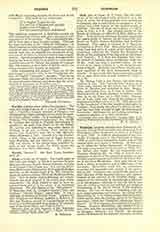

Cuspinian (properly SPIESHAYM or SPIESHAM), Jo-HANNES, distinguished humanist and statesman, b. at Schweinfurt, Lower Franconia, in 1473; d. at Vienna, April 19, 1529. In 1490 he matriculated at the University of Leipzig, went to the University of Vienna (1493) to continue his humanistic studies, and in 1494 entered there on a course of medicine. At this early age he edited the “Liber Hymnorum” of Prudentius, and made a reputation by his lectures on Virgil, Ilorace, Sallust, and Cicero. He was acquainted with Emperor Frederick III. In 1493, in reward for a panegyric on the life of St. Leopold of Austria, he was crowned as poet laureate and received the title of Master of Arts from Maximilian. Soon after this he was made a doctor of medicine, and in 1500 rector of the university. Maximilian made him his confidential councilor and appointed him curator of the university for life. Cuspinian also received the position of chief librarian of the Imperial Library, and superintendent of the archives of the imperial family. As curator of the university he exercised great influence on its development, although he was not able to prevent the decline caused by the political and religious disturbances of the second decade of the sixteenth century. He was on terms of friendship with the most noted humanists and scholars; the calling of his friend Celtes (q.v.) to Vienna is especially due to him. Celtes and he were the leading spirits of the literary association called the “Sodalitas Litterarum Panubiana”. In 1515 Cuspinian was prefect of the city of Vienna. Emperor Maximilian, also Charles V at a later date, sent him on numerous diplomatic missions to Hungary, Bohemia, and Poland. He brought about a settlement of the disputed succession between the Hapsburg line and the King of Hungary and Bohemia; another of his missions was to accompany Bona Sforza, the bride of King Sigismund of Poland, to Cracow. His literary activity covered the most varied domains. Although his poetical writings are of little importance, and his manuscript “Collectanea medicin.” of no great value, nevertheless he attained a high reputation as a collector and, to some degree, as an editor of ancient and medieval manuscripts. Among other publications, he edited in 1511 L. Florus, in 1515 the “Libellus de lapidibus”of Marboduus, and the medieval chronicler Otto of Freising. Important as a contribution to the study of ancient history is the publication which first appeared, after his death in 1553, namely, the “Fasti consulares”, with which were united the “Chronicle” of Cassiodorus and the “Breviarium” of Sextus Rufus. Another valuable work of Cuspinian is the “History of the Roman Emperors”, prepared during the years 1512-22 (in Latin, 1540, and in German, 1541). For a long time, especially after the battle of Mohacs, he busied himself with the Turkish question and printed both political and historical writings on the subject, the most important of which is his “De Turcarum origine, religione et tyrannide”. His best work is “Austria, sive Commentarius de rebus Austri” etc., edited by Brusch in 1553 with critical notes. A kind of diary (1502-27), which throws much light on his political activity, was published in “Fontes rerum austriacarum” (1885), I, 1 sqq. A life of Cuspinian, not always reliable, is found in the complete edition of his works by Gerbelius (Commentationes Cusp., Strasburg, 1540); a more complete edition of his works appeared at Frankfort in 1601.
JOSEPH SAUER

